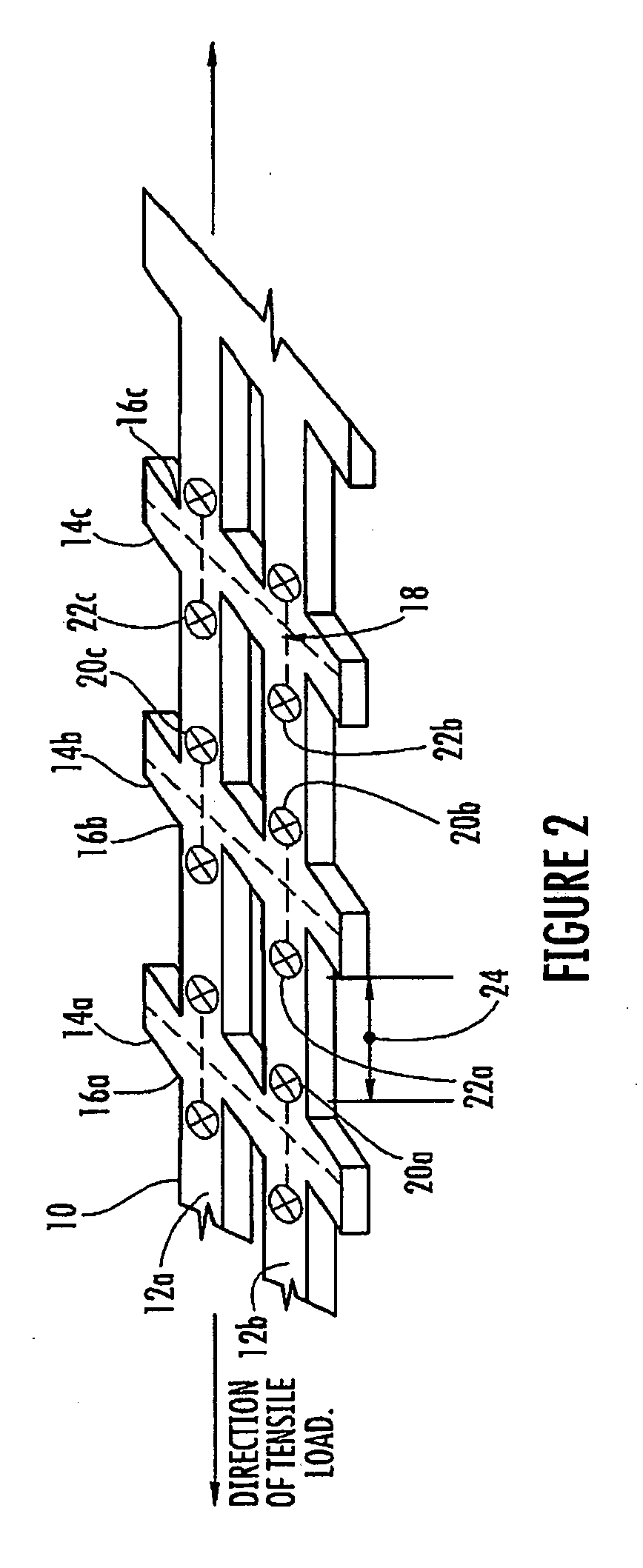Sensor-enabled geosynthetic material and method of making and using the same
a technology of geosynthetic materials and sensors, applied in the direction of instruments, non-metal conductors, conductors, etc., can solve the problems of imposing overly conservative design procedures and reduction factors on the strength, comparatively little attention, and costly consequences on the installation of instruments
- Summary
- Abstract
- Description
- Claims
- Application Information
AI Technical Summary
Problems solved by technology
Method used
Image
Examples
Embodiment Construction
[0036]The present invention relates to a sensor-enabled geosynthetic (SEG) material used for constructing geosynthetic structures, such as geogrids and geomembranes, which are used in reinforcement and containment applications. The sensor-enabled geosynthetic material is embedded with sensing capabilities in order to measure the mechanical strains subjected on the geosynthetic structures at any location of the geosynthetic structures. As the mechanical strains on a geosynthetic structure change, the conductivity of the sensor-enabled geosynthetic material is affected.
[0037]Generally, the sensor-enabled geosynthetic material includes a polymeric material (or geosynthetic material) and an electrically conductive filler. The polymeric materials used in geosynthetic structures are typically electrically insulating materials. An electrically conductive filler is added to the polymeric material in sufficient amounts to transform the polymeric material from an insulating material into a co...
PUM
| Property | Measurement | Unit |
|---|---|---|
| compressive stress | aaaaa | aaaaa |
| aperture size | aaaaa | aaaaa |
| aperture size | aaaaa | aaaaa |
Abstract
Description
Claims
Application Information
 Login to View More
Login to View More - R&D Engineer
- R&D Manager
- IP Professional
- Industry Leading Data Capabilities
- Powerful AI technology
- Patent DNA Extraction
Browse by: Latest US Patents, China's latest patents, Technical Efficacy Thesaurus, Application Domain, Technology Topic, Popular Technical Reports.
© 2024 PatSnap. All rights reserved.Legal|Privacy policy|Modern Slavery Act Transparency Statement|Sitemap|About US| Contact US: help@patsnap.com










